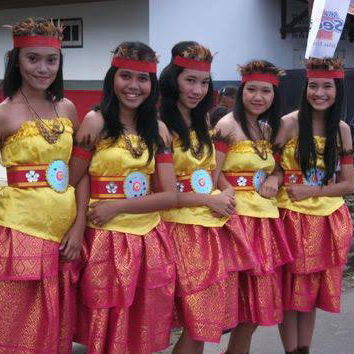Ambonese

Location. The Central Moluccas are located just below the equator between 3° and 5° S and 126° and 132° E. They encompass the island of Ambon, the Uliasser or Lease Islands (Haruku, Saparua, Nusalaut), Ceram, Buru, Ambelau, Buano, Kelang, Ceramlaut, Gorong, and the Banda Islands. Sizable immigrant populations reside in Jakarta and other large Indonesian cities, and about 40,000 have lived since 1951 as political exiles in the Netherlands. The total land area is about 21,000 square kilometers.
Demography. In 1980 the population of the Central Moluccas was estimated as 554,000, of which 112,000 reside in the provincial capital of Kota Ambon (Ambon City). The average population growth rate is 2.5 percent per year.
Linguistic Affiliation. Originally, various related Austronesian languages were spoken, and they are still spoken in the interiors of Ceram and Bum. These so-called bahasa tanah (languages of the land) are also still widely used in Muslim villages of the coastal regions, but have survived in only a few Christian villages there. The Christians are speakers of Ambonese Malay, a derivative of Sumatran Malay that arrived as a lingua franca at least three centuries before the first Europeans arrived. Most Muslims can speak Ambonese Malay. An increasing number of both groups is also familiar with the national language, Bahasa Indonesia, a form of "standard" Malay and the medium of formal communication.
Bibliography
Bartels, Dieter (1977). "Guarding the Invisible Mountain: Intervillage Alliances, Religious Syncretism, and Ethnic Identity among Ambonese Christians and Muslims in the Moluccas." Ph.D. dissertation, Cornell University.
Bartels, Dieter (1988). Moluccans in Exile: A Struggle for Ethnic Survival. Leiden: Center for the Study of Social Conflict, University of Leiden.
Cooley, Frank L. (1962). Ambonese Adat: A General Description. New Haven: Yale University, Southeast Asia Studies.
Jensen, Adolf E. (1948). Die drei Ströme: Züge aus dem geistigen und religiösen Leben der Wemale, einem Primitiv-Volk in den Molukken. Leipzig: Otto Harrassowitz.
